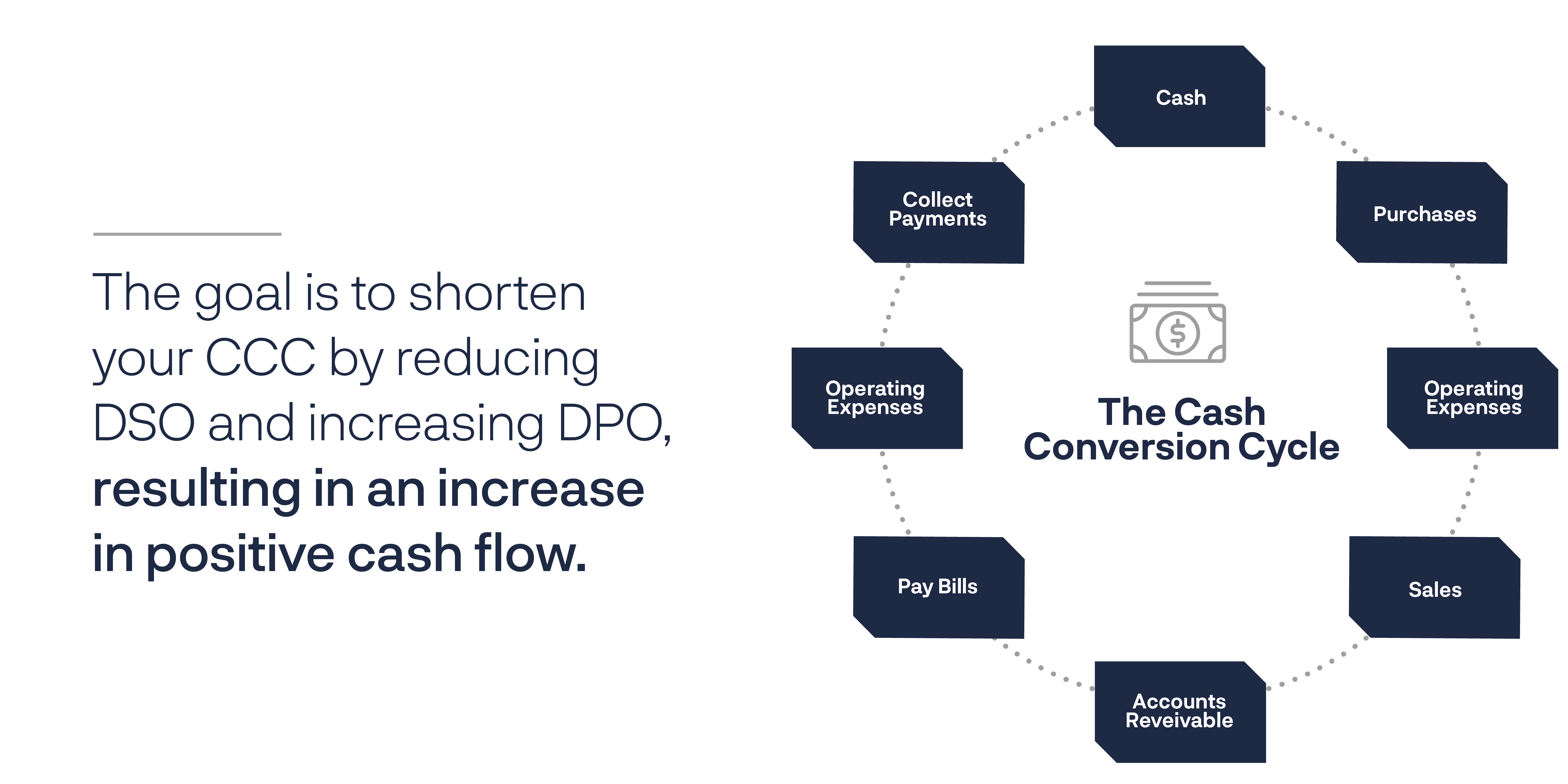The Cash Conversion Cycle (CCC) measures how much time it takes for your business to convert inventory or other resources into cash from sales. Creating efficiencies with the CCC is one way to increase working capital without generating additional revenue.

There are three important factors that affect your CCC:
- Days Inventory Outstanding (DIO): Measures how quickly your business converts materials into products. Releasing additional working capital into the CCC will allow your business to purchase needed inventory. Access to additional working capital may also allow your business to take advantage of potential supplier discounts.
- Days Sales Outstanding (DSO): Tracks how quickly your business collects payment after a sale is made. Optimizing receivables processes will accelerate collections allowing your business to access these funds quicker while also reducing errors, costs, and fraud.
- Days Payable Outstanding (DPO): Reflects the time it takes for your business to pay suppliers. An effective payables strategy will increase float thus increasing payables outstanding and releasing additional working capital back into your CCC.
The goal is to shorten your CCC by reducing DSO and increasing DPO, resulting in an increase in positive cash flow. An important first step in uncovering inefficiencies within your CCC is establishing working capital benchmarks for your business by comparing your CCC to competitors within your industry. Contact your financial experts at Dubuque Bank & Trust, a division of HTLF Bank to help you set your industry benchmarks to analyze your unique CCC and unlock trapped cash.
Our team is ready to help you calculate how much inefficiencies within your CCC are costing your business and implement a strategy to unlock trapped cash.

